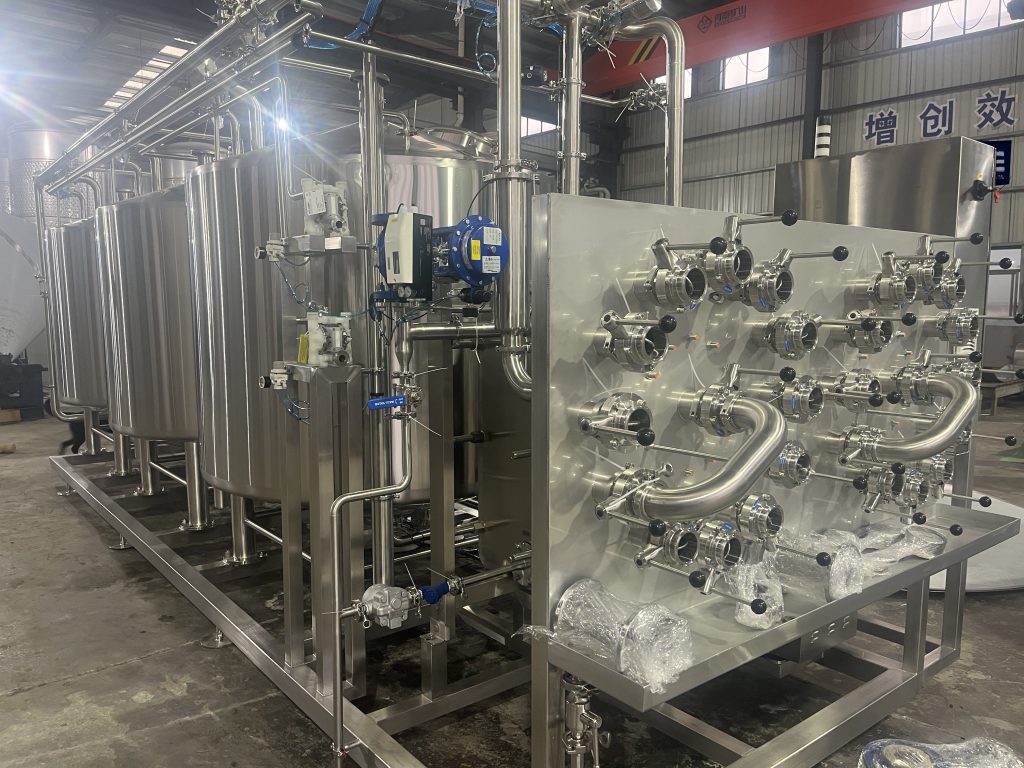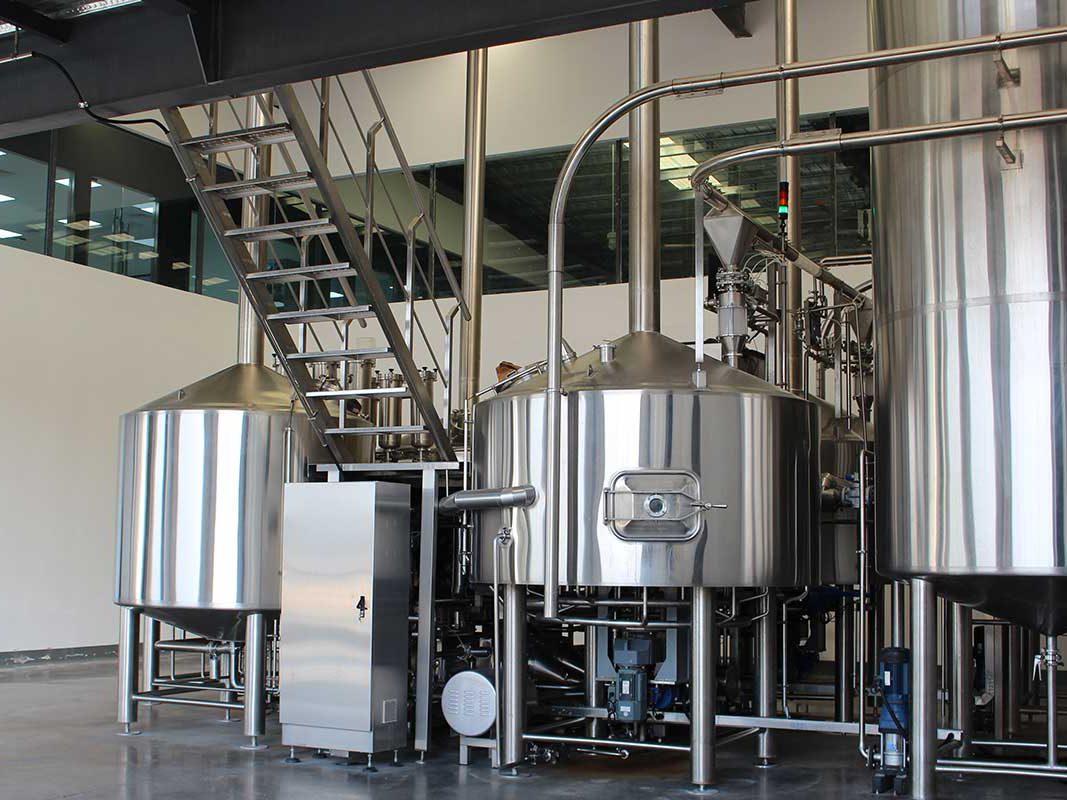Introduction
Choosing the right professional brewing equipment for your brewery is a critical decision that directly influences the quality of your beer, operational efficiency, and overall success. This comprehensive guide aims to assist you in navigating the complex landscape of brewing equipment. By focusing on essential aspects and practical tips, you can make informed choices that align with your business goals and brewing needs.
Understanding Your Brewing Needs

Before you can effectively select the professional brewing equipment for your brewery, it’s essential to thoroughly assess and understand your specific brewing needs. This process involves considering several key factors that will significantly influence your choices in equipment and technology. Here’s a detailed exploration of what you should consider:
Production Volume
Estimating your production volume is one of the most critical steps in selecting brewing equipment. You need to determine how much beer you plan to produce to ensure that the equipment you choose can handle your output efficiently. Consider both your current production needs and future growth expectations. It’s wise to invest in equipment that can accommodate a slight increase in production to avoid the need for immediate upgrades as your brewery expands.
- Daily Output: Calculate your expected daily production based on your brewing schedule.
- Seasonal Variations: Account for any seasonal peaks, such as increased production for summer festivals or holiday sales, which might require additional capacity or flexibility in operation.
Variety of Beers
The types of beer you plan to brew can significantly impact the type of brewing equipment required. Different beer styles may require specific brewing methods and conditions:
- Ale vs. Lager: Ales and lagers ferment at different temperatures, necessitating different types of fermentation tanks or temperature control systems.
- Specialty Beers: Beers that require unique ingredients or prolonged fermentation times might need specialized equipment, such as additional storage tanks or unique filtering systems.
Space Considerations
The physical layout and space of your brewery will heavily influence the type and size of the equipment you can install. Efficient use of space is crucial, especially for urban breweries or those with limited area:
- Floor Plan: Assess the total available space and consider how equipment will be arranged for optimal workflow.
- Ceiling Height: Certain types of equipment, particularly fermentation tanks, can be quite tall. Ensure that your facility has adequate vertical space to accommodate these items.
- Expansion Plans: If you anticipate future expansion, plan your equipment layout so that new pieces can be added without a complete overhaul of your brewing space.
Utility Requirements
Brewing equipment has specific utility requirements that must be met to ensure efficient operation. These include water supply, electrical needs, and waste management:
- Water Quality and Supply: The quality of water is essential in brewing. Ensure your location has access to a reliable and suitable water source. Additionally, check if the water supply can meet the volume demands of your brewing process.
- Power Supply: Brewing equipment, especially those that are automated, require significant electrical power. Verify that your facility has adequate power capabilities and consider the need for backup generators or alternative power sources.
- Waste Management: Brewing produces considerable waste, including spent grains, hops, and yeast. Plan for efficient waste removal and consider sustainable practices like recycling spent grains.
Budget Considerations
Finally, your budget plays a critical role in equipment selection. Understand the costs associated with different types of equipment and weigh them against their benefits and efficiencies:
- Initial Investment vs. Long-Term Savings: Some high-efficiency or automated systems may have a higher upfront cost but can offer long-term savings in labor and utilities.
- Financing Options: Explore leasing, loans, and other financing options that can make expensive equipment more accessible.
Selecting the Core Equipment

Choosing the core equipment for your brewery is a pivotal decision that will shape your brewing capabilities and the overall quality of your beer. This section will guide you through the selection of the essential components that form the backbone of your brewing operation. Here’s a more detailed look at each key piece of equipment you’ll need:
Brewhouse
The brewhouse is the central hub where the brewing process begins, and its configuration is crucial for efficient production. There are several common setups, each suitable for different types of breweries:
- 2-Vessel System: A simpler setup that includes a combined mash/lauter tun and a combined kettle/whirlpool. This is ideal for smaller breweries or those with limited space.
- 3-Vessel System: This includes separate vessels for mashing, lautering, and boiling/whirlpooling, allowing for more flexibility and higher brewing efficiency.
- 4-Vessel System: The most versatile and efficient setup, ideal for larger operations, includes separate mash tun, lauter tun, brew kettle, and whirlpool, facilitating continuous brewing.
Features to consider include automation for temperature control, timing, and ingredient addition, which can significantly enhance consistency and ease of operation.
Fermentation and Brite Tanks
After the wort is brewed, it needs to be fermented and conditioned before it can be served or packaged. This stage is crucial for the development of the beer’s flavor and carbonation:
- Fermentation Tanks: These are typically cylindrical-conical tanks that allow for effective yeast and sediment separation from the beer. They come in various sizes to accommodate different production scales and are often equipped with cooling jackets to maintain precise temperature control during fermentation.
- Brite Tanks: Used for the final stage of brewing, brite tanks are where beer is clarified and carbonated before packaging. These tanks are also equipped with cooling jackets and are designed to operate under pressure, which is essential for carbonation.
Cooling Systems
Maintaining the correct temperature is essential throughout the brewing process, especially during fermentation:
- Glycol Chillers: These are the most common cooling systems used in breweries. They circulate glycol to maintain the desired temperature in fermentation and brite tanks, as well as in the brewhouse.
Filtration Systems
Filtration is a crucial step in achieving the clarity and purity of the final beer product. Depending on the style of beer and desired clarity, different filtration systems can be used:
- Plate Filters: Typically used for larger batches, these filters remove particles by passing beer through layers of filtrative material.
- Diatomaceous Earth (DE) Filters: These filters are effective for removing very fine particles and are used by many larger breweries.
Packaging Equipment
The final step in the brewing process involves packaging the beer into bottles, cans, or kegs:
- Canning Lines: Automated canning lines are efficient for high-volume production, capable of filling and sealing thousands of cans per hour.
- Bottling Lines: Similar to canning lines but designed for bottles, these often include additional modules for rinsing, filling, capping, and labeling.
- Kegging Systems: Essential for breweries that distribute draft beer, these systems clean, fill, and seal kegs.
Enhancing Efficiency with Automation
Automation can significantly enhance the efficiency and consistency of your brewing operations. Automated systems can control temperatures, manage transfers, and monitor pressures, all of which help maintain consistent product quality and reduce labor costs.
Benefits of Automation
- Consistency: Automated systems reduce human error, ensuring consistent product quality.
- Efficiency: Automation speeds up production and frees up staff for other tasks.
- Scalability: Easier to scale operations with automated processes.
Mid-Section: Equipment Selection Table
Here’s a detailed table comparing various types of professional brewing equipment to help you make an informed decision:
| Equipment Type | Brand | Capacity | Features |
|---|---|---|---|
| Mash Tun | BrewMaster | 500L | Insulated, steam jacketed, made of SS |
| Fermentation Tank | FermentPro | 1000L | Dual-zone glycol cooling, conical base |
| Bottling Line | BottleTech | 2000 bottles/hr | Automated, includes labeler and capper |
| Keg Washer | KegClean | 40 kegs/hr | Semi-automatic, dual station |
Conclusion
Selecting the right professional brewing equipment for your brewery involves understanding your brewing needs, choosing the right components, and considering potential upgrades and automation. By making informed decisions, you can ensure the longevity and success of your brewing operations.
Choosing the right equipment is a pivotal step in setting up a successful brewery. Use this guide as a foundation to explore further, consult with professionals, and tailor your equipment choices to your specific needs and goals.
FAQ
What is the lifespan of professional brewing equipment?
With proper maintenance, most brewing equipment can last 10-20 years, depending on usage and material quality.
How often should brewing equipment be serviced?
Regular maintenance is crucial. It is recommended to service your equipment at least once a year, with more frequent checks on high-use components like pumps and valves.
Can I upgrade parts of my brewing system, or do I need to buy new?
Upgrading specific components is possible, especially in modular systems. This approach can be cost-effective and less disruptive than replacing entire systems.

